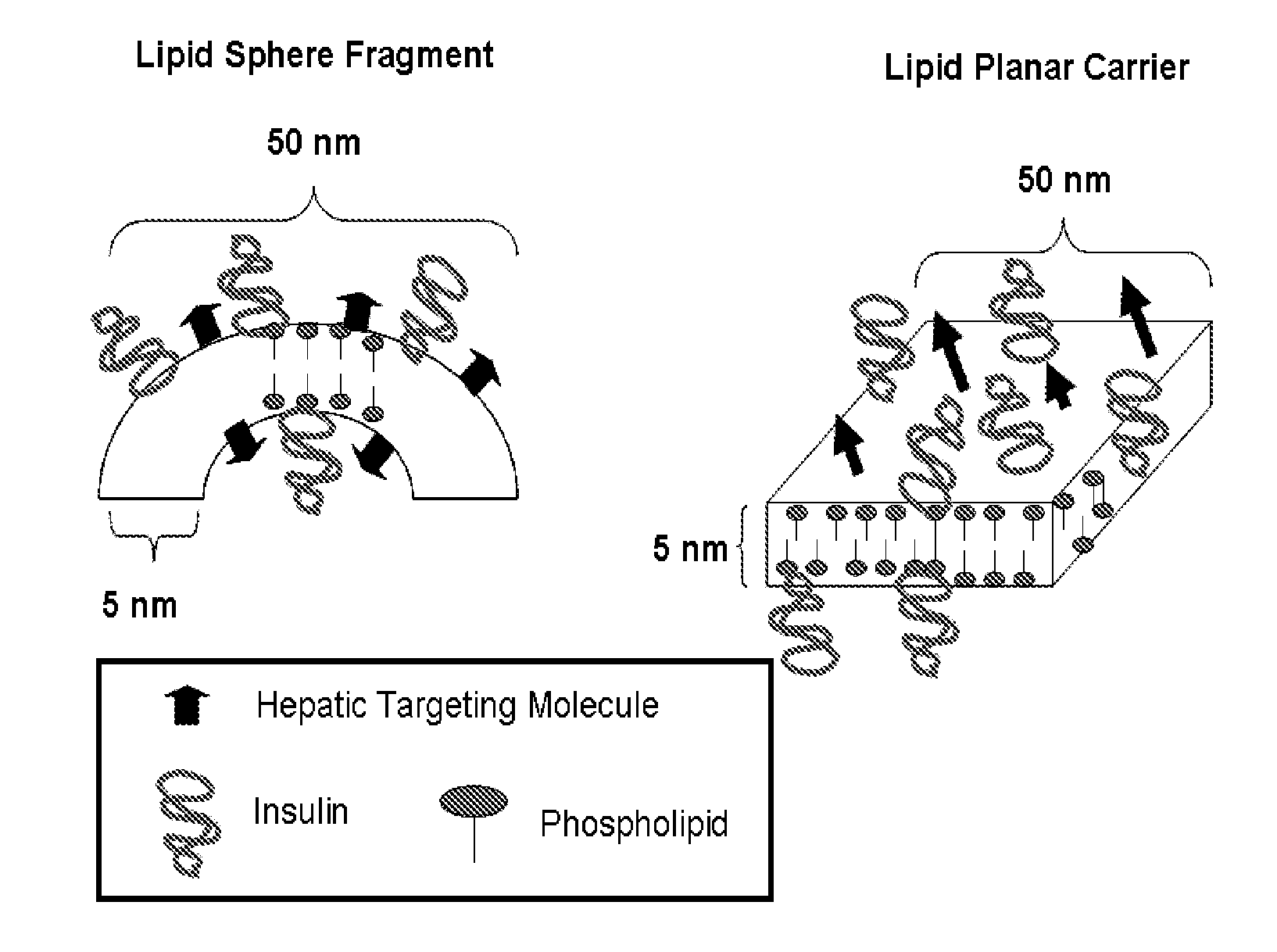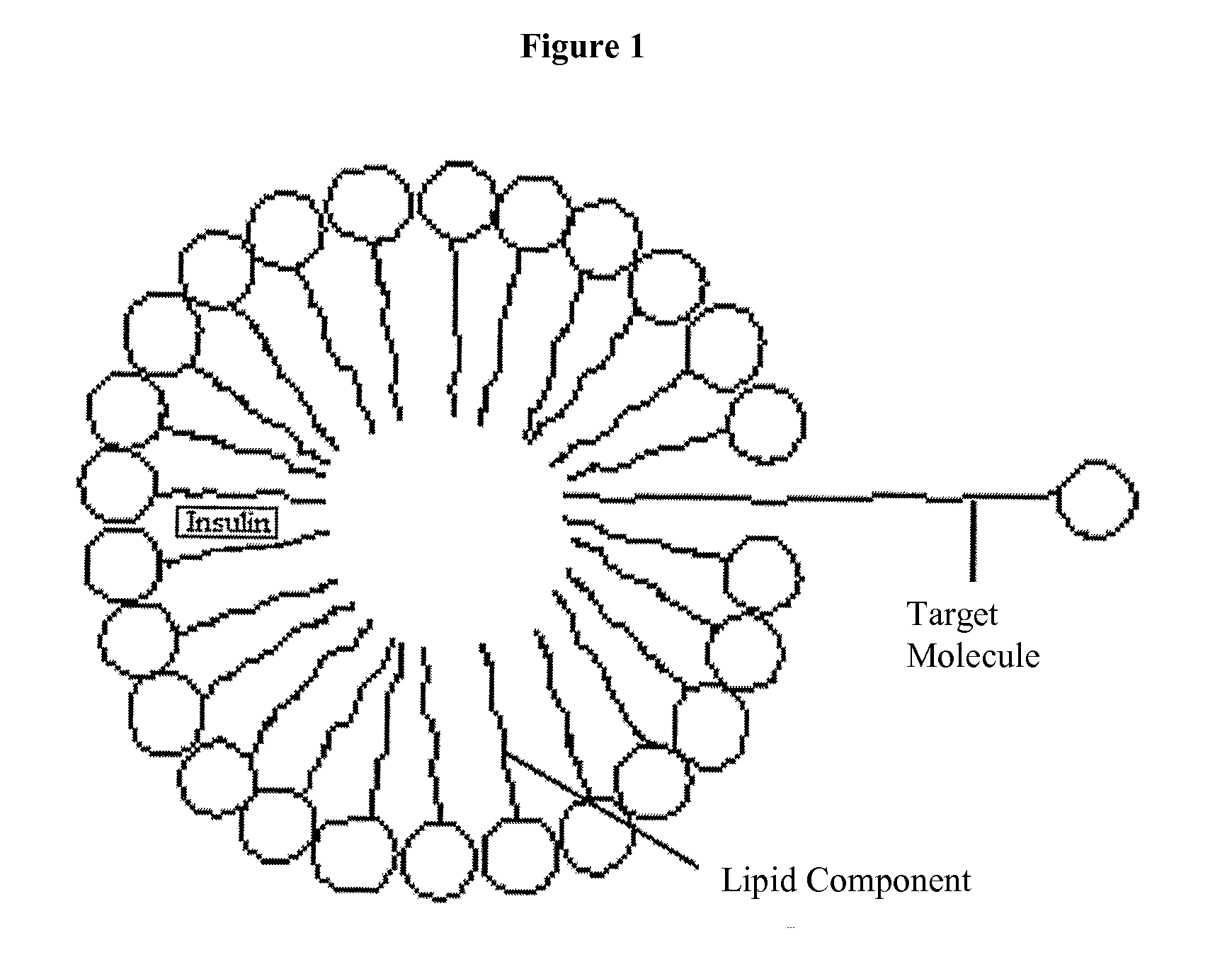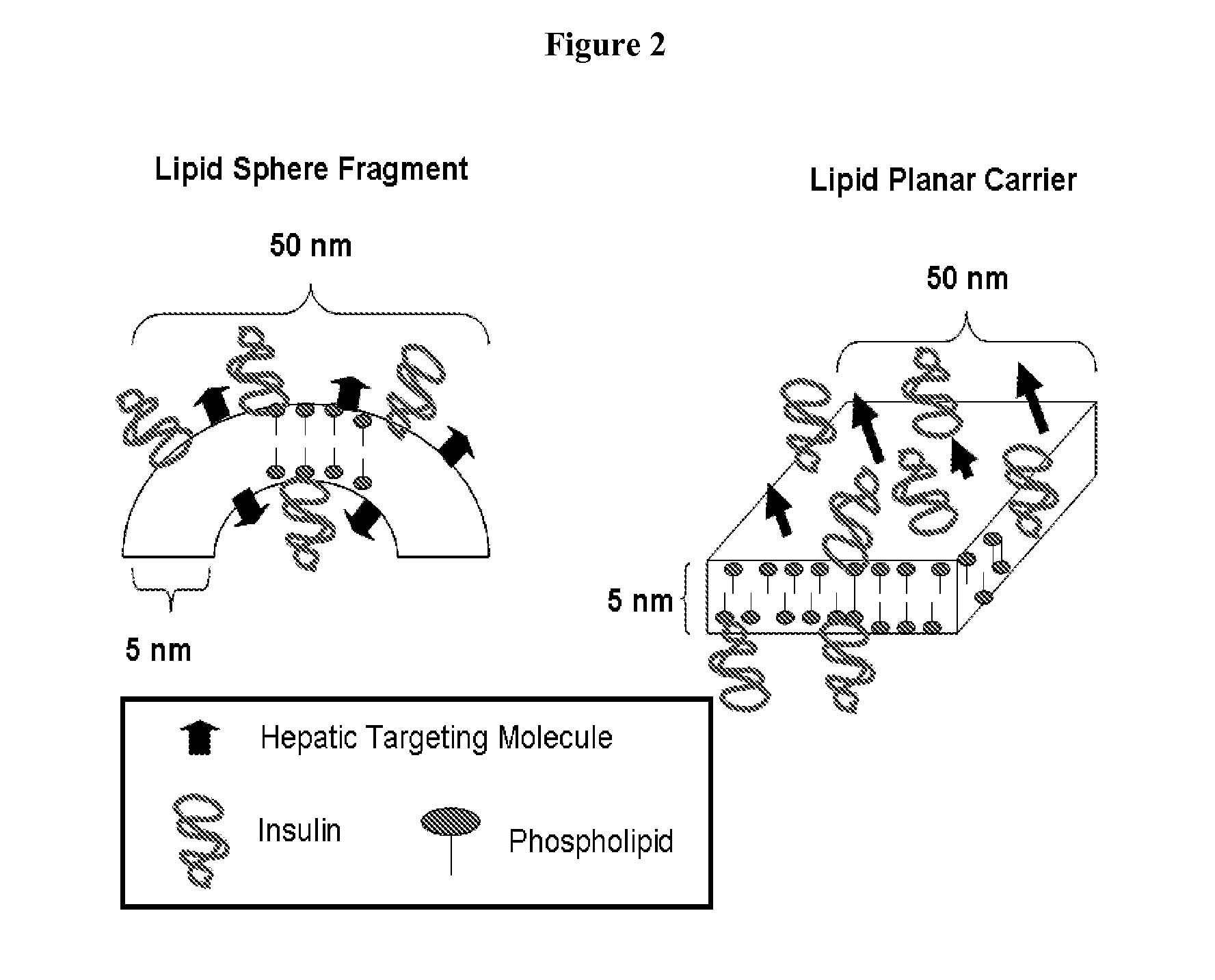Insulin Therapies for the Treatment of Diabetes, Diabetes Related Ailments, and/or Diseases or Conditions Other Than Diabetes or Diabetes Related Ailments
a technology for treating which is applied in the direction of peptide/protein ingredients, drug compositions, and metabolic disorders, etc., and can solve problems such as complicated the use of insulin to treat diabetes, and the complicated nature of diseases or conditions other than diabetes or diabetes related ailments
- Summary
- Abstract
- Description
- Claims
- Application Information
AI Technical Summary
Benefits of technology
Problems solved by technology
Method used
Image
Examples
example 1
Method of Preparing HDV Insulin
[0276]The lipid construct used in the preparation of HDV insulin was prepared by mixing 1,2-distearoyl-sn-glycero-3-phosphocholine, cholesterol, dihexadecyl phosphate, and targeting agent at about 71.2 wt %, 9.4 wt %, 18.2 wt %, and 1.2 wt %, respectively. The mixture of 1,2-distearoyl-sn-glycero-3-phosphocholine, dihexadecyl phosphate, cholesterol, and targeting agent was placed in a 3 liter flask and 45 mls of an anhydrous chloroform / methanol (2:1 v:v) solution was added to the lipid mixture. The solvent was subsequently evaporated under reduced pressure using a rotary evaporator (“rotovap”) with a water bath at about 60° C. The resulting residue was dried under high-vacuum for approximately two hours to remove residual solvent.
[0277]Once all organic solvents had been removed, 600 ml of 28.4 mM sodium phosphate (monobasic-dibasic) buffer at pH 7.0 was added to the flask. The flask was then placed in a water bath at about 76 to about 84° C., preferabl...
example 2
Method of Preparing Oral HDV Insulin
[0281]Generally, the constituents of oral HDV insulin are formed when at least one lipid component and optional targeting agent are homogenized in an aqueous media via microfluidization or other process involving cavitation.
[0282]In an embodiment of the invention, the lipid component(s) and optional targeting agent(s) may be homogenized in 18 mM phosphate buffer at a pH of about 6.0 to a pH of about 8.0. Lipid component concentration in the phosphate buffer may range from about 10 to about 200 mg / ml and any and all whole and partial integers therebetween. In one embodiment, the lipid component concentration is about 30 to about 150 mg / ml. In more preferred embodiment, the lipid component concentration is about 15 to about 50 mg / ml. In a most preferred embodiment, the lipid component concentration is about 28-30 mg / ml.
[0283]Homogenization of the aqueous media, lipid component(s), and optional targeting agent may be accomplished via treatment in a d...
PUM
| Property | Measurement | Unit |
|---|---|---|
| w/w | aaaaa | aaaaa |
| w/w | aaaaa | aaaaa |
| size distribution | aaaaa | aaaaa |
Abstract
Description
Claims
Application Information
 Login to View More
Login to View More - R&D
- Intellectual Property
- Life Sciences
- Materials
- Tech Scout
- Unparalleled Data Quality
- Higher Quality Content
- 60% Fewer Hallucinations
Browse by: Latest US Patents, China's latest patents, Technical Efficacy Thesaurus, Application Domain, Technology Topic, Popular Technical Reports.
© 2025 PatSnap. All rights reserved.Legal|Privacy policy|Modern Slavery Act Transparency Statement|Sitemap|About US| Contact US: help@patsnap.com



